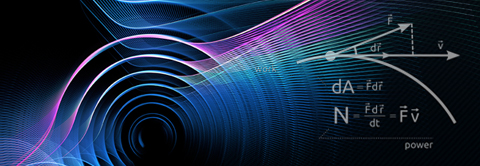“Hybrid quantum systems with mechanical oscillators”
2016.10.14 17:34
| 날짜 | 2016-10-18 15:00 |
|---|---|
| 연사 | |
| 장소 | E6-2. 1st fl. #1323 |
“Hybrid quantum systems with mechanical oscillators”
Dr. JunHo Suh, Korea Research Institute of Standards and Science
Oct. 18 (Tue.), 3PM, E6-2. 1st fl. #1323
Abstract:
Quantum machines are actively pursued to harness quantum coherence and entanglement as new resources for information processing and precision sensing. Among those activities, hybrid quantum systems are recognized as a promising platform for building multi-functional quantum machines by connecting quantum states in different physical domains, and mechanical oscillators are accepted as important components in the quantum hybrids[1]. In this talk, I review recent examples of hybrid quantum systems involving mechanical oscillators strongly coupled to electrons and photons. In the first part, a quantum electro-mechanical system is introduced. A cooper-pair box qubit is electrostatically coupled to a nanomechanical oscillator. A dispersive measurement of qubit states is achievable through high-quality read-out of nanomechanical motion, which also maintains qubit coherence proved via microwave spectroscopy and Landau-Zener interference. In the second part, mechanical oscillators coupled to microwave photons, or "quantum opto-mechanical systems", are described, where radiation pressure mediates the interaction between photons and the mechanical oscillator. Photons act as a probe for mechanical motion in this case, and a fundamental limit in measurement sensitivity arises due to Heisenberg's uncertainty principle, as known as quantum standard limit(SQL). By carefully measuring mechanical motion in quadratures, we identify the fundamental back-action from photons which mandates SQL, and also demonstrate a novel scheme known as quantum non-demolition measurement (QND) which allows a precise measurement without back-action in one quadrature of motion[3]. When the coupling between the microwave photons and mechanical motion is strong enough, the back-action from photons start modifying quantum noise in mechanical oscillators and produced mechanical quantum squeezed states[4,5]. Finally, it is expected that one could approach ultra-strong coupling regime as photon-mechanical oscillator coupling strength increases, where single photon coupled to mechanical motion dominates the hybrid system. Mechanical states in the ultra-strong coupling limit deviate from well-known number states which could open a new paradigm for controlling mechanical quantum states[6]. A quantum dot system embedded in a nanowire is proposed to be a candidate to reach this interesting regime, and our recent progress toward this direction is dissussed.
[1] Kurizki et.al., PNAS 112, 3866-3873 (2015).
[2] LaHaye et.al., Nature 459, 960-964 (2009).
[3] Suh et.al., Science 344, 1262-1265 (2014).
[4] Wollman et.al., Science 349, 952-955 (2015).
[5] Lei et.al., PRL 117, 100801 (2016).
[6] Nation et.al., PRA 93, 022510 (2016).
Contact: SunYoung Choi, (sunyoungchoi@kaist.ac.kr)
Center for Quantum Coherence in Condensed Matter, KAIST







